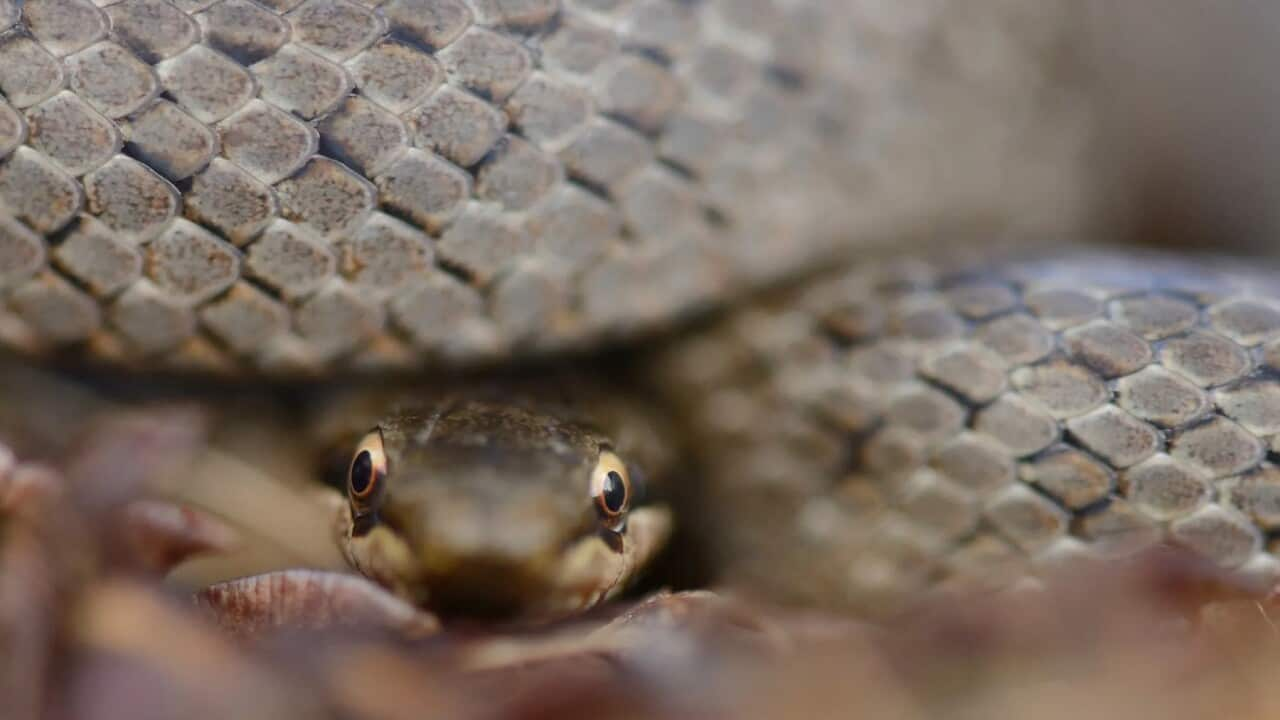TRANSCRIPT
The Smooth Snake, Britain's rarest native reptile, is thriving on East Devon's Pebblebed Heaths 16 years after being reintroduced to the county.
A recent survey recorded 39 individual snakes representing a jump from a previous high of 31 in 2023.
The Smooth Snake had been absent from Devon for half a century, but numbers have grown steadily since the release.
It's non venomous, grows to around 70 centimetres, and is found only in heathlands in southern England.
"There is one, yes tucked in the corner there."
The Smooth Snake is secretive and rarely seen in the wild.
It spends much of its time hidden under vegetation or sheltering beneath objects on the heath.
Unlike adders or grass snakes, it is non venomous and kills its prey by constriction, feeding mainly on lizards, small mammals and nestling birds.
Its smooth scales give it a glossy appearance, setting it apart from other snakes found in Britain.
Each animal also carries a unique crown shaped marking on its head, which researchers use to tell individuals apart.
Liz Hamling is a volunteer at the RSPB a charity for the conservation of birds and nature in UK, and one of the groups involved in helping the Smooth Snake start to thrive again.
"They've got dots down their length, but the head shape is the important bit because it's like a heart shape on its head."
According to the RSPB, centuries of habitat loss reduced the population to just a handful of sites.
But due to the conservation efforts the population here is self sustaining.
The project involved years of volunteer work to restore the heath, cutting back scrub, and creating open corridors for snakes and birds.
Roger Hamling is also a volunteer at RSPB.
"It's the head marking and the first 2 or 3 markings on the back that define who that particular individual is... and so I did that and I then played snap with all these pictures lining them up and checking them out."
To track their progress Richard and Liz photograph each animal, matching markings to create a record of individuals.
The RSPB says the success of the project reflects the wider recovery of the heath.
Volunteers have worked to create conditions not just for snakes but also for rare birds such as nightjars and Dartford warblers.
Site manager Toby Taylor says it took time for results to show.
"It was really quiet the first few years. There were very few snakes that were were evident, but then they started to show up. Now it's a fantastic and it's just one of those species that sits along some of our really iconic heathland birds so like nightjar and Dartford warblers."
For conservationists and volunteers, it is hoped this is proof that a patient approach can help even the shyest of species wind their way back to strength.
Slow and steady, it seems, might just be the key to winning the reptile race.













